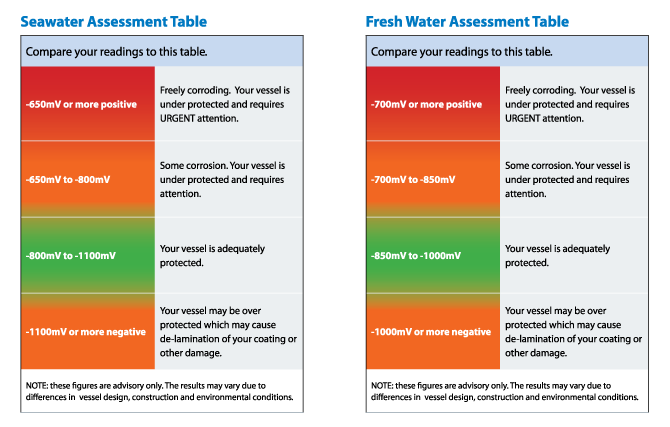Understanding your results
Once you have taken your readings, check them against the assessment tables below. If you are testing in brackish water, use the Seawater Assessment Table.

Why should you record your results?
- To gain an understanding of how long the coating and/or anodes offer protection and predict when they require replacement or upgrading.
- If the readings are significantly different from previous readings, it may indicate problems caused by stray current.
- Use Rust Seeker™ to take readings to identify the source of stray electrical current. Take readings while connected and disconnected from shore power, and with and without the motor running. This will assist in identifying the source of stray current.
What do the results mean?
The aim of anodes and protective coatings on the hull is to shift the electrochemical potential of the vessel into the protected range, which for most aluminium and steel vessels in seawater is between -800mV and -1100mV. If the potential of the vessel is more positive than -800mV (i.e. between 0 and -800mV) it is prone to corrosion and requires more anodes or the hull coating needs attention.
If the potential of the vessel is too negative (more negative than -1100mV for most vessels), the protective coating may be susceptible to blistering and possible de-lamination from the hull and may accelerate corrosion of aluminium hulled vessels.
Converting volts(V) to millivolts(mV)
If taking readings in volt (V) mode on the multimeter, multiply the reading by 1000 to convert to millivolts (mV). Note that the assessment table is in millivolts.

